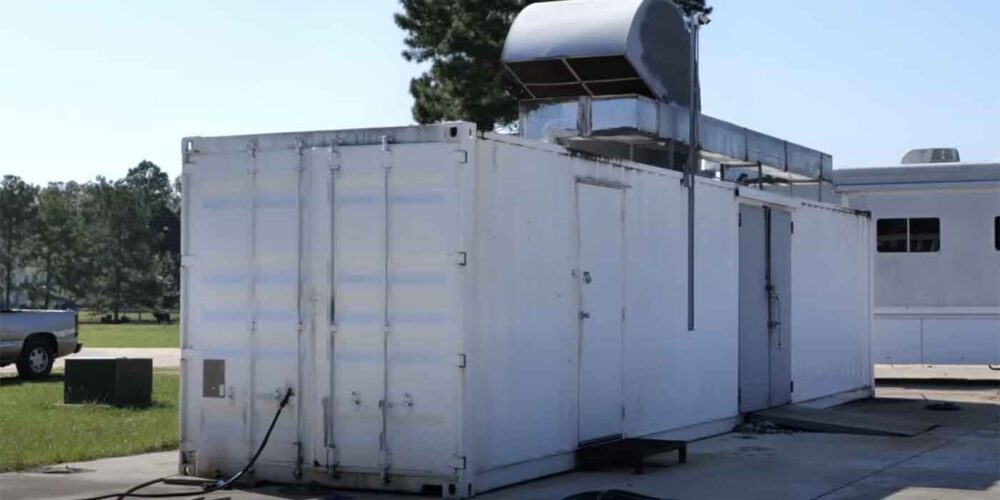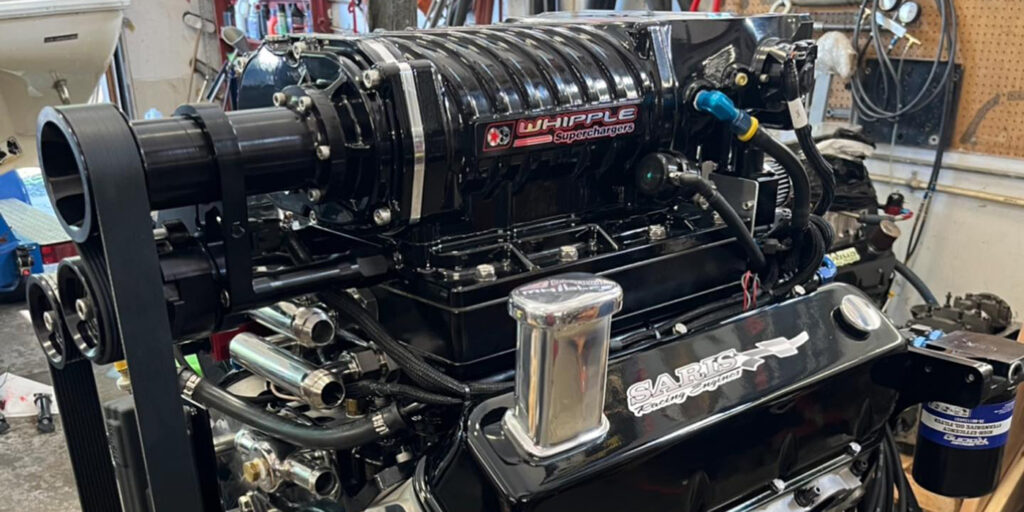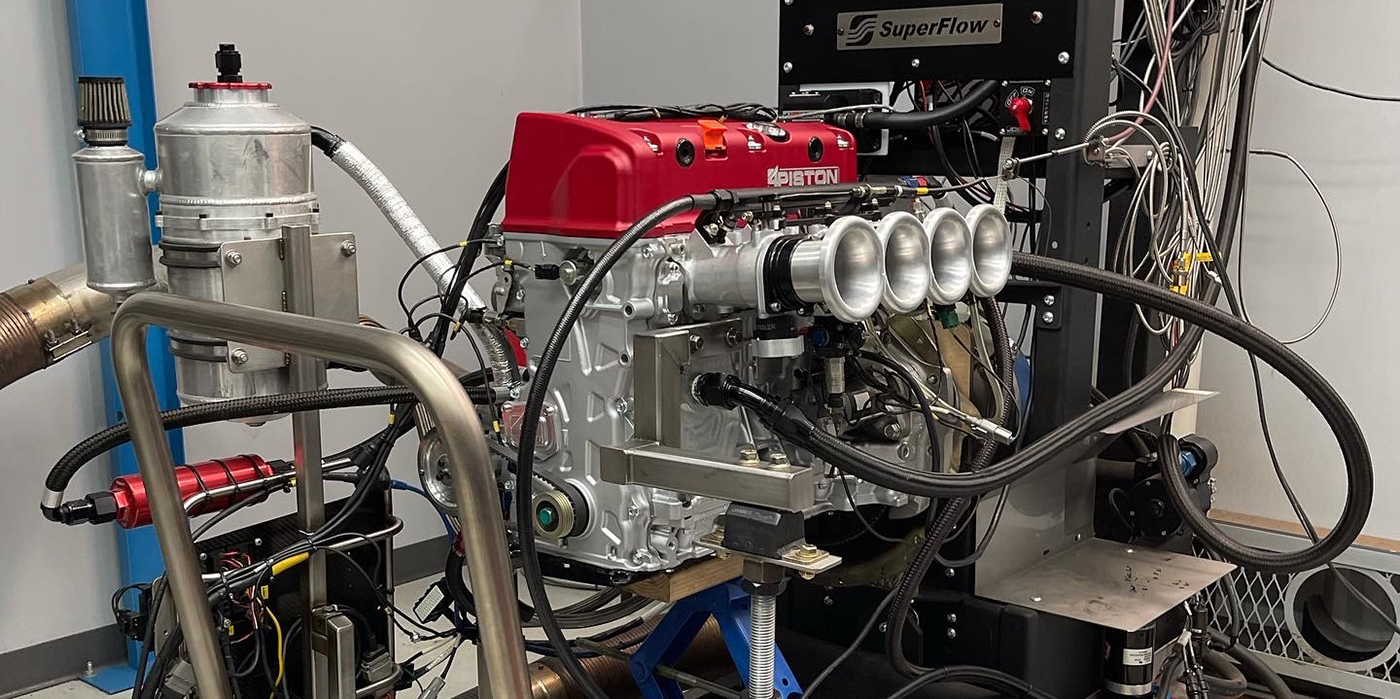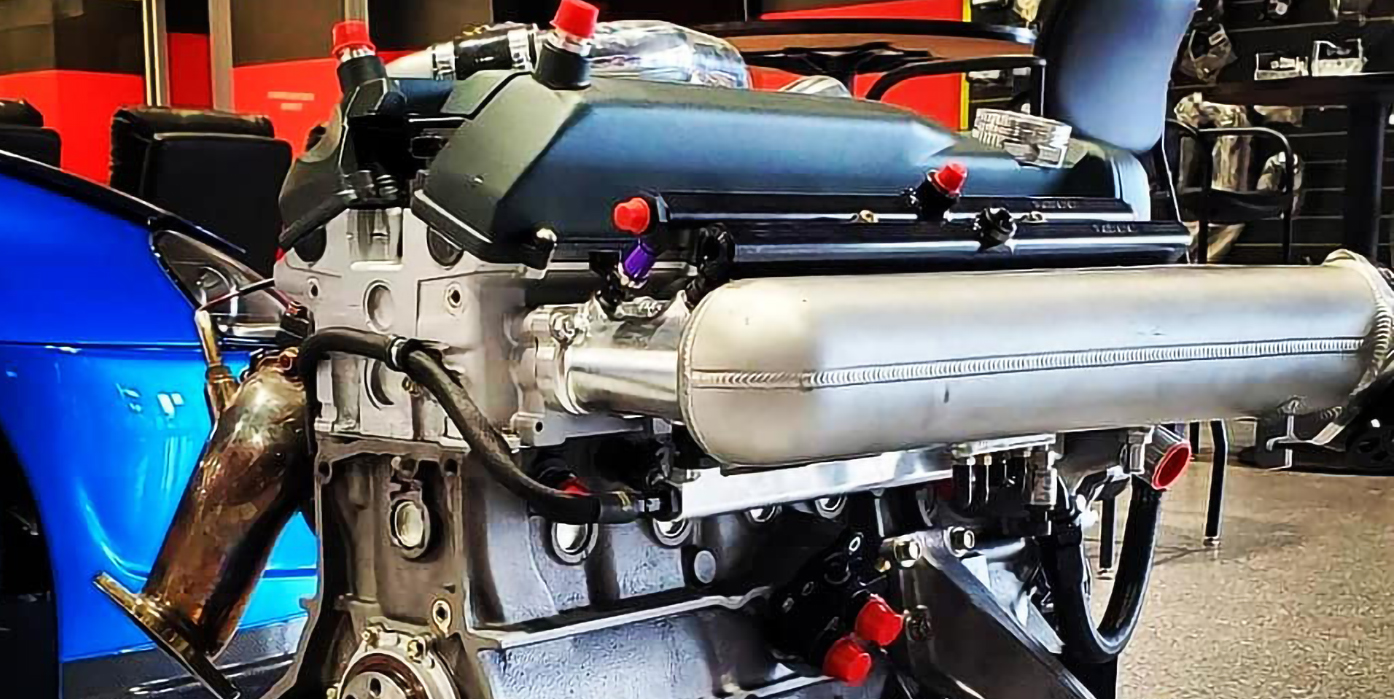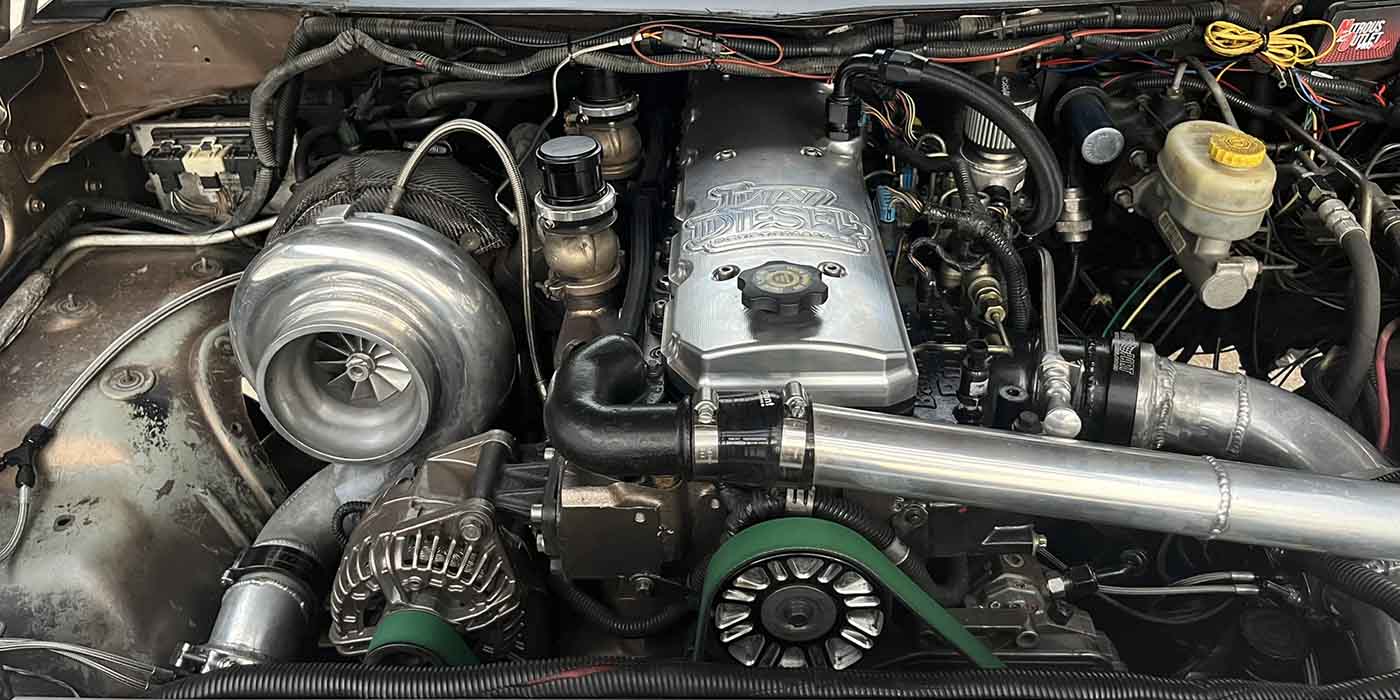Over eight years ago, the guys at TRE Racing Engines were busy building engines, machining parts and testing engines on the dyno – it was a day just like any other. However, for owner Taylor Lastor, and the rest of the employees at TRE Racing Engines in Cleveland, TX, this particular day would end much differently than normal.
“We were dynoing a 10,000 rpm, Comp Eliminator engine when the steel flywheel exploded during testing, cutting the fuel lines on the dyno,” Lastor says. “It happened so fast and erupted the dyno room into flames.”
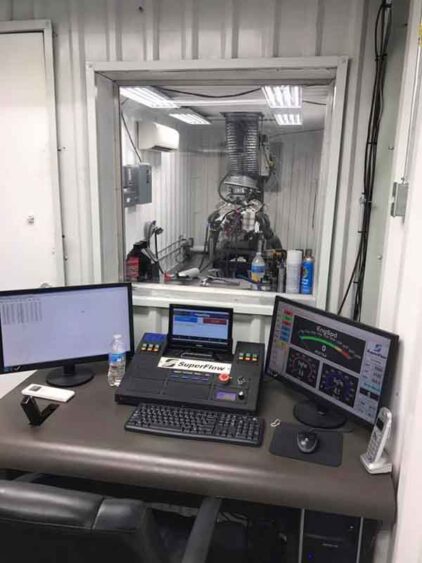
Fortunately, no one was injured in the incident, but unfortunately, due to TRE’s location in Texas, it took more than 30 minutes for firefighters to arrive, leaving the entire shop in a pile of ashes.
“By the time fire trucks arrived, the fire had already spread from the dyno room to the main shop and that’s when it got bad,” Lastor says. “At that point, the firefighters didn’t want to go in, they just wanted to keep the fire from going anywhere. The fire took everything out. I had two dynos, five CNCs, two honing machines, two seat and guide machines, mills and lathes and tools my dad had from the ‘80s. It was all scrap. Hundreds of engines, thousands and thousands of dollars-worth of parts – all lost.”
TRE didn’t let that fire stop them. The shop immediately moved into another building Taylor owned that was being used for assembling and maintaining racecars. Now, all these years later, TRE has remained focused on building big cubic inch engines for Top Dragster, Top Sportsman and Pro Modified, as well as Outlaw class engines featuring nitrous, turbos and blowers. One thing the fire did teach Taylor was there’s more than one way to build a dyno room, and it doesn’t necessarily need to be inside your shop. In fact, it might be better if it wasn’t.
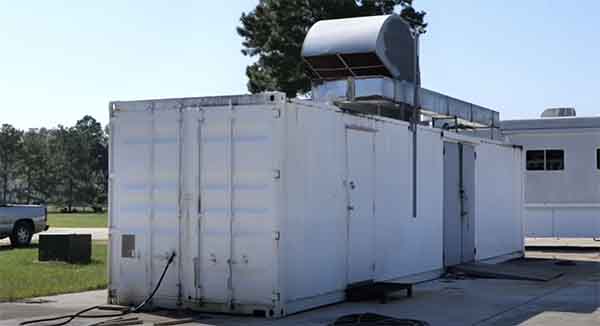
“I’d heard of people building dyno rooms out of shipping containers, and I actually saw a shop that had this idea and I initially thought it was crazy. I knew the guy and he contacted me after my fire and said, ‘Why don’t you do what I did?’ I dismissed it. I thought it was goofy, and we had to get the shop up and running for the basics, which we did. After a few months of getting back on our feet with the engine building, I got back to thinking, ‘What am I going to do for a dyno?’
“We were kind of renting out another dyno when we needed it, which was hectic driving back and forth 45 minutes each way. We couldn’t do the R&D we wanted to do in another man’s shop. I was sitting there looking at pictures of this other guy’s dyno one night and thinking that actually doesn’t look bad.”
Taylor’s apprehension was mostly due to what seemed like a small, cramped space. However, the big upside was the fact this dyno design would be away from the main shop, should an incident occur again.
“It would be away from the shop,” he says. “It would be sealed if anything stupid happened – you just shut the doors. It’s all metal. It can’t catch fire like our other building did. I looked further into it and talked to people about it who had them and heard nothing but good things, so I bought a container. If I didn’t like it, we could just use it for storage.”
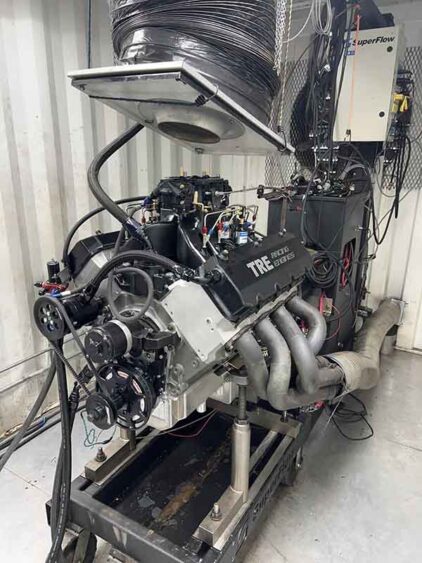
TRE got one of its chassis fabricators to help outfit the container with doors and walls and an aluminum floor. Taylor then bought the latest greatest dyno from SuperFlow.
“We probably dyno roughly 200 motors,” Lastor says. “It usually runs four or five days a week – it works great for us.”
Taylor’s concern over space within the container for a dyno cell was certainly warranted. However, once TRE got everything set up how they wanted it to be, they were pleasantly surprised with the result. The space is actually very comparable to most dyno cell dimensions.
“This set up is very similar to a stainless dyno cell being that it’s all metal,” he says. “We have this dyno situated 40-feet away from the engine shop. It’s got a fire suppression system. It’s a better way of doing it because we do some pretty wild stuff in here and something can happen.”
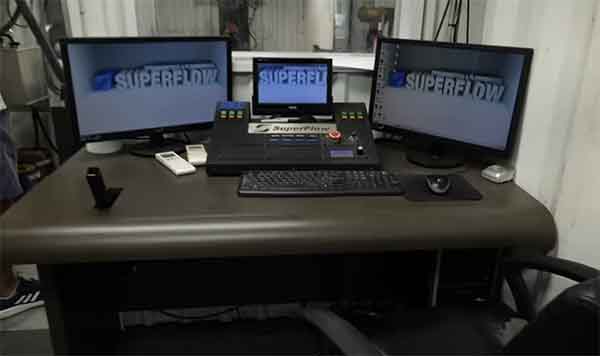
Engines enter the dyno cell through a side, steel door, which is fire proof, and when Taylor runs an engine using traditional-style headers, he has as much room as just about any other dyno cell would.
“It works really good,” he says. “We have a real good air movement system in here to keep the engines fresh. We pump in air-conditioned air to try and run at 70-degrees F year round, because in Texas, it’ll be 100-degrees F or we get freezing cold 30-degrees F here. We try to run 70-degree F air year-round and dehumidified. Honestly, we haven’t been able to maintain temperatures like that in our other dyno rooms, especially during summertime. This thing will stay really nice because it’s not too big. I’ve come to actually like it better than the old one.”
Again, for the dyno itself, Taylor bought the biggest one SuperFlow offered, which was rated at 2,500 horsepower. However, the most he’s put on there so far has been TRE’s 959 combos, which make around 1,750 horsepower NA.
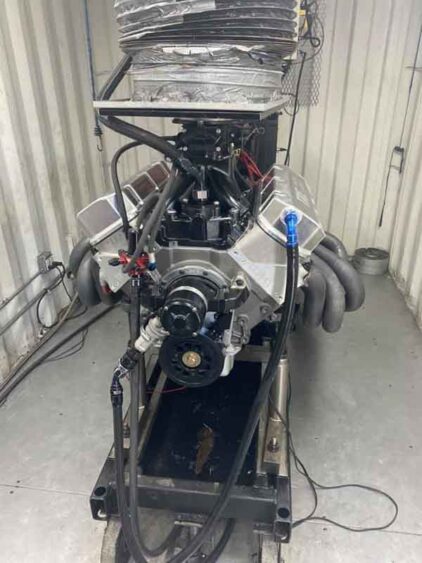
“I don’t think we’re pushing it to the limit at all,” he says. “We’ve probably had eight or 10 dynos of different styles since 1988. I will always want a dyno. For an engine builder, it’s always nice to be able to go to the dyno and try different things or experiment with EFI. I can’t quit thinking about stuff we want to try on EFI. The dyno’s a big part of all that.”
The dyno is a valuable tool, so it’s nice when an engine builder feels confident in the setup of it, and that’s what the shipping container dyno design has done for Taylor and TRE.
“If you want to see the fruits of your labor, horsepower numbers are kind of the main way you do that,” Lastor says. EB

